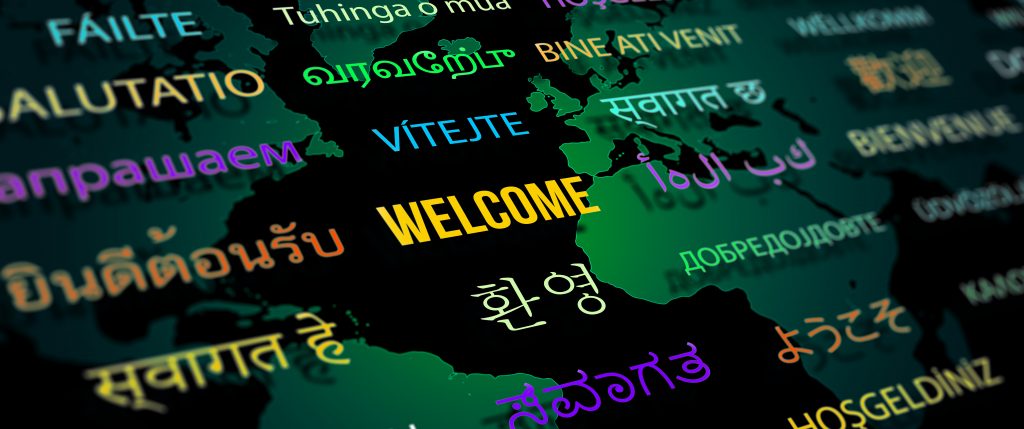Canada is often celebrated as a multicultural haven, a nation known for its diversity, tolerance, and inclusivity. However, recent events and ongoing discussions have brought to light the persistent issue of racism within the country. While it’s true that Canada has made significant strides towards equality and social justice, it’s also essential to acknowledge that racism exists here, just as it does in many parts of the world. But does the presence of racism mean that Canada, as a whole, is a racist country?
The answer to this question is, No. Canada is not a racist country, and as Canadian citizens, we can hold our heads high knowing that we live in a land where equality, diversity, and respect prevail. While acknowledging that racism exists in our society, it is important to differentiate between individual acts of prejudice and systemic racism that permeates an entire nation. Canada, with its multiculturalism policy, has been making significant strides in combating racism and promoting inclusivity since its inception.
Multiculturalism has been Canada’s defining characteristic for decades, setting an example for the world. The policy recognizes and celebrates the diversity of our population, encouraging the preservation of cultural heritages. It allows individuals to embrace their own identities while fostering a sense of belonging to the collective Canadian society. By valuing diversity, Canada has created an environment that encourages the understanding of different cultures, traditions, and perspectives. This attitude directly challenges ignorance and intolerance, serving as a beacon of hope for those seeking a more united and inclusive world.
Canadians are dedicated to implementing laws and policies that prioritize equality. The Canadian Charter of Rights and Freedoms ensures that every individual is protected against discrimination based on race, ethnic origin, religion, and other grounds. It serves as a roadmap for fairness, guaranteeing that all citizens are treated with dignity and respect. These legal protections are accompanied by a robust justice system that actively seeks out instances of racism and ensures that justice is served.
While individual incidents of racism do occur, Canada’s commitment to justice sends a powerful message – that we will not tolerate discriminatory behavior.
Consider the following facts:
According to statistics Canada Study released in 2019, women in Canada live an average of 4.3 years longer than men.
Another statistics Canada study based on 2016 census data using the weekly earnings of Canadian born individual, found that many visible minority groups (including Japanese, Korean, South Asian , Chinese) , out earn Canada’s white population.
A statistics Canada study released in 2023 further determines the percentage of racialized groups with a bachelor’s degree on higher average population 32.9% of Canada’s population. The breakdown as follows:
Korean 60.5
Chinese 56.3
South Asian 55.2
Arab 48.5
Japanese 48.2
Filipino 45.5
Multiple Racialized group 45.3
Latin American 37.1
Total Population 32.9
Black 32.4
In Canada many visible minority populations are over represented relative to their proportion of the work force in professional occupation such as medicine and engineering.
For example, according to a report published by Matthew Lau in October 30, 2023, in Canada South Asians comprise 7.3 percent of the working-age population but account for:
- 12.4 percent of engineers;
- 19.0 percent of computing professionals; and
- 12.5 percent of doctors.
Similarly, the Chinese population in Canada accounts for 5.0 percent of the working-age population, but account for:
- 10.2 percent of engineers;
- 12.0 percent of computing professionals; and
- 8.0 percent of doctors.
Many other minority groups are overrepresented in these professions as well. For example, relative to their share of the working-age population, Canadians whose backgrounds are South Asian, Chinese, Arab, West Asian, Korean, Japanese, and “multiple racialized groups” are overrepresented among doctors. Latin Americans are underrepresented among doctors, but overrepresented among engineers and computing professionals.
Canada’s education system plays a crucial role in fostering an inclusive and tolerant society. From a young age, Canadian children are taught about the importance of diversity, empathy, and acceptance. Schools actively promote anti-racist curriculums, teaching students about Canada’s multicultural history and highlighting the contributions of diverse communities. By equipping the younger generation with knowledge and compassion, Canada is nurturing a future where racism is less likely to persist.
An example of Canada’s unbiased education is that visible minorities in Canada on average outperform white students on math proficiency and other academic test measurements.
Another essential aspect of Canada’s anti-racist efforts lies in its support for refugees and immigrants. Canada has long been known for its compassionate approach to welcoming those in need, providing them with an opportunity for a better life. Through programs like the Canadian Refugee Settlement Program, the country has opened its doors to individuals fleeing persecution and violence, irrespective of their race or background. By embracing newcomers, Canada strengthens its commitment to multiculturalism and adds new layers of diversity to its already vibrant tapestry.
While welcoming immigrants, we must be diligent and on guard to ensure that immigrants do not bring their bias’s or prejudices with them as they may choose to settle in Canada.
As an example in an article published by Rahim Mohamed in National Post, Rahim references an open letter that was posted to social media, in which the National Council of Canadian Muslims (NCCM) advised members of Parliament that they would not be welcome at “community gatherings” during Ramadan, the Muslim holy month, unless they first publicly committed to a list of anti-Jewish stances.
This is blatant anti-Semitism and as Canadians we must fight to ensure that no one is subject to discrimination.
It is important to acknowledge that racism can never be completely eradicated. Individuals can hold prejudiced attitudes, which manifest in various forms, including systemic racism. However, Canada’s response to these challenges sets it apart. Rather than turning a blind eye, Canada confronts these issues head-on and implements policies and initiatives to address them.
In conclusion, Canada is not a racist country. While acknowledging the existence of racism, our nation remains committed to challenging prejudices from both existing and new Canadians, fostering inclusivity, and ensuring equality for all.
Through its multiculturalism policy, robust legal framework, education system, and welcoming approach towards refugees and immigrants, Canada stands as a shining example of hope in a world often plagued by discrimination. As Canadians, we can take pride in the progress we have made so far, and continue on our journey towards a more harmonious and inclusive future.
However we must be vigilant and identify and call out racism where ever we see or encounter it.
About the author:
Robert E. Kulhawy
Co-Author of the Canadian Creed. He is a successful entrepreneur, philanthropist, environmentalist and catalyst for social change. He is the President and CEO of Commerx Corporation, a leader in internet and telecom services.




